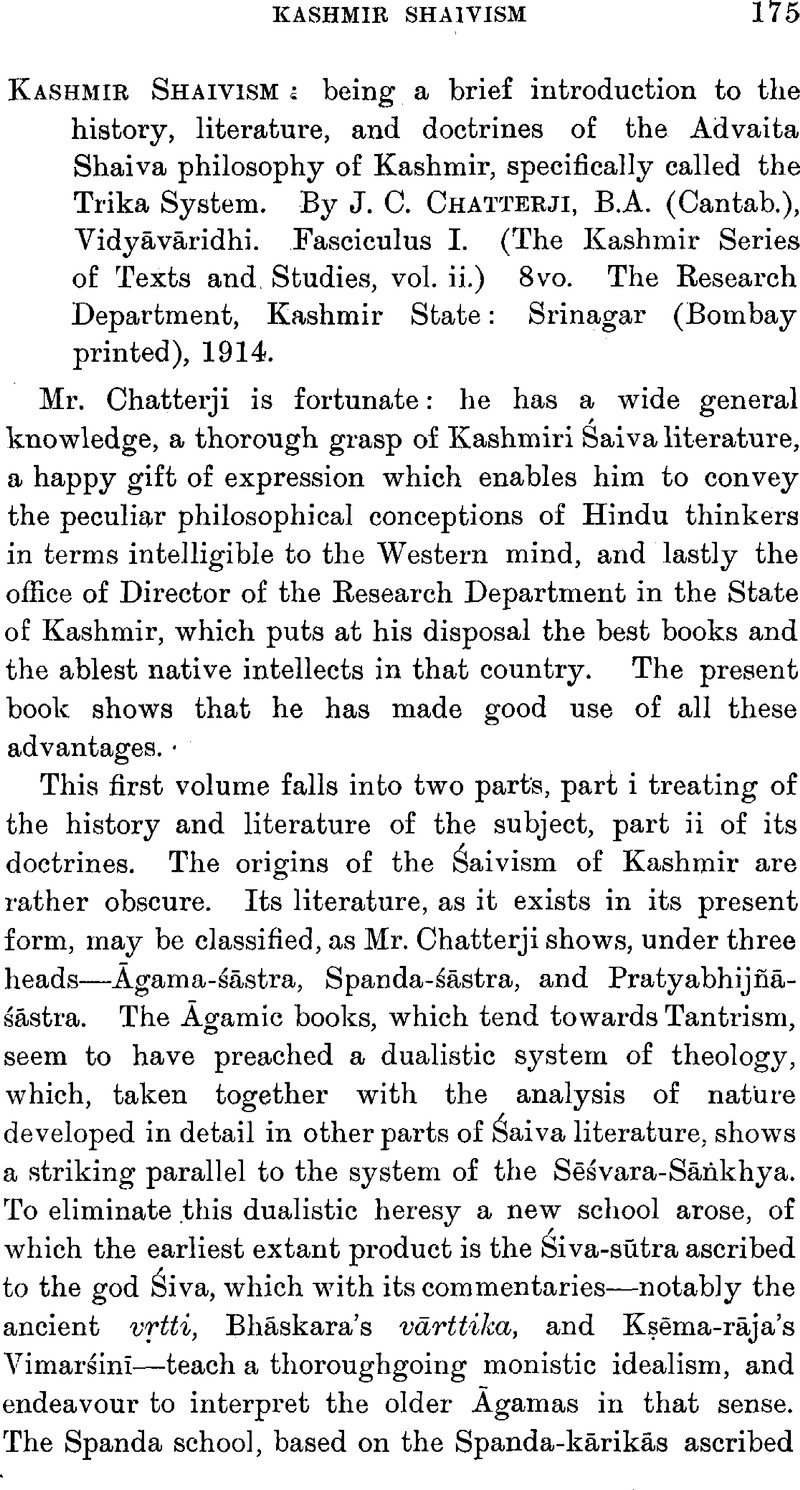Published online by Cambridge University Press: 15 March 2011

1 The Sarva-daráana-saṅgraha applies this term not only to the doctrines here mentioned, but also to the schools based on the Śiva-sūtra and Spanda-kārikās.
2 I take this opportunity to acknowledge with gratitude Mr. Chatterji's correction on p. 11 of my mistake in JRAS. 1910, p. 719.Google Scholar But I regret to say that I am still not convinced that Abhinava-gupta's Paramārthasāra is based upon the Vaishṇava tract of that name, and that the latter is really the ancient Ādhāra-kārikās. The whole is greater than its part: if, as Abhinava-gupta asserts, his P. is an epitome of the Ādhārakārikās, it must have been shorter than the latter; but it is actually longer than the Vaishṇava P.